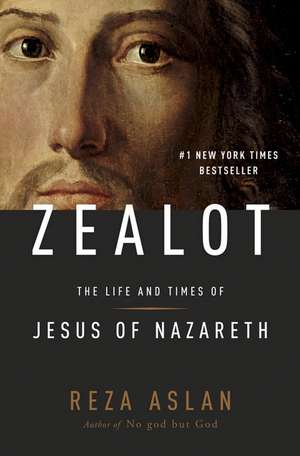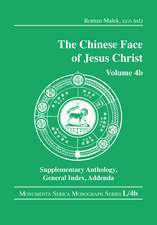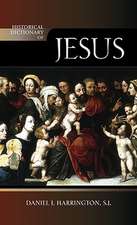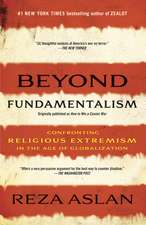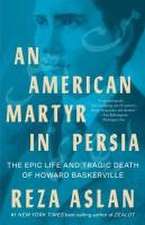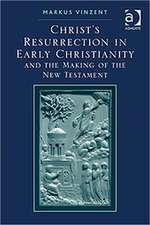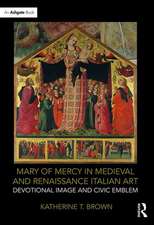Zealot
Autor Reza Aslanen Limba Engleză Hardback – 15 iul 2013
From the internationally bestselling author of No god but God comes a fascinating, provocative, and meticulously researched biography that challenges long-held assumptions about the man we know as Jesus of Nazareth.
Two thousand years ago, an itinerant Jewish preacher and miracle worker walked across the Galilee, gathering followers to establish what he called the “Kingdom of God.” The revolutionary movement he launched was so threatening to the established order that he was captured, tortured, and executed as a state criminal.
Within decades after his shameful death, his followers would call him God.
Sifting through centuries of mythmaking, Reza Aslan sheds new light on one of history’s most influential and enigmatic characters by examining Jesus through the lens of the tumultuous era in which he lived: first-century Palestine, an age awash in apocalyptic fervor. Scores of Jewish prophets, preachers, and would-be messiahs wandered through the Holy Land, bearing messages from God. This was the age of zealotry—a fervent nationalism that made resistance to the Roman occupation a sacred duty incumbent on all Jews. And few figures better exemplified this principle than the charismatic Galilean who defied both the imperial authorities and their allies in the Jewish religious hierarchy.
Balancing the Jesus of the Gospels against the historical sources, Aslan describes a man full of conviction and passion, yet rife with contradiction; a man of peace who exhorted his followers to arm themselves with swords; an exorcist and faith healer who urged his disciples to keep his identity a secret; and ultimately the seditious “King of the Jews” whose promise of liberation from Rome went unfulfilled in his brief lifetime. Aslan explores the reasons why the early Christian church preferred to promulgate an image of Jesus as a peaceful spiritual teacher rather than a politically conscious revolutionary. And he grapples with the riddle of how Jesus understood himself, the mystery that is at the heart of all subsequent claims about his divinity.
Zealot yields a fresh perspective on one of the greatest stories ever told even as it affirms the radical and transformative nature of Jesus of Nazareth’s life and mission. The result is a thought-provoking, elegantly written biography with the pulse of a fast-paced novel: a singularly brilliant portrait of a man, a time, and the birth of a religion.
Praise for Zealot
“Riveting . . . Aslan synthesizes Scripture and scholarship to create an original account.”—The New Yorker
“Aslan’s insistence on human and historical actuality turns out to be far more interesting than dogmatic theology. . . . This tough-minded, deeply political book does full justice to the real Jesus, and honors him in the process.”—San Francisco Chronicle
“Aslan brings a fine popular style, shorn of all jargon, to bear on the presentation of Jesus of Nazareth. . . . He isn’t interested in attacking religion or even the church, much less in comparing Christianity unfavorably to another religion. . . . You don’t have to lose your religion to learn much that’s vitally germane to its history from Aslan’s absorbing, reader-friendly book.”—Booklist (starred review)
“Aslan is steeped in the history, languages and scriptural foundation of the biblical scholar and is a very clear writer with an authoritative, but not pedantic, voice. Those of us who wade into this genre often know how rare that is.”—The Seattle Times
| Toate formatele și edițiile | Preț | Express |
|---|---|---|
| Paperback (2) | 69.33 lei 3-5 săpt. | +13.75 lei 7-13 zile |
| The Westbourne Press – 3 mar 2014 | 69.33 lei 3-5 săpt. | +13.75 lei 7-13 zile |
| Random House Trade – 31 oct 2014 | 107.24 lei 3-5 săpt. | +28.84 lei 7-13 zile |
| Hardback (1) | 192.14 lei 17-23 zile | +16.64 lei 7-13 zile |
| Random House – 15 iul 2013 | 192.14 lei 17-23 zile | +16.64 lei 7-13 zile |
Preț: 192.14 lei
Nou
Puncte Express: 288
Preț estimativ în valută:
36.77€ • 40.06$ • 30.98£
36.77€ • 40.06$ • 30.98£
Carte disponibilă
Livrare economică 29 martie-04 aprilie
Livrare express 19-25 martie pentru 26.63 lei
Preluare comenzi: 021 569.72.76
Specificații
ISBN-13: 9781400069224
ISBN-10: 140006922X
Pagini: 296
Ilustrații: MAP, ILLUSTRATION
Dimensiuni: 165 x 236 x 28 mm
Greutate: 0.61 kg
Editura: Random House
ISBN-10: 140006922X
Pagini: 296
Ilustrații: MAP, ILLUSTRATION
Dimensiuni: 165 x 236 x 28 mm
Greutate: 0.61 kg
Editura: Random House
Recenzii
“Riveting . . . Aslan synthesizes Scripture and scholarship to create an original account.”—The New Yorker
“Aslan’s insistence on human and historical actuality turns out to be far more interesting than dogmatic theology. . . . This tough-minded, deeply political book does full justice to the real Jesus, and honors him in the process.”—San Francisco Chronicle
“Aslan brings a fine popular style, shorn of all jargon, to bear on the presentation of Jesus of Nazareth. . . . He isn’t interested in attacking religion or even the church, much less in comparing Christianity unfavorably to another religion. He would have us admire Jesus as one of the many would-be messiahs who sprang up during Rome’s occupation of Palestine, animated by zeal for ‘strict adherence to the Torah and the Law,’ refusal to serve a human master, and devotion to God, and therefore dedicated to throwing off Rome and repudiating Roman religion. . . . You don’t have to lose your religion to learn much that’s vitally germane to its history from Aslan’s absorbing, reader-friendly book.”—Booklist (starred review)
“Be advised, dear reader, Sunday school this isn’t. Yet Aslan may come as close as one can to respecting those who revere Jesus as the peace-loving, turn-the-other-cheek, true son of God depicted in modern Christianity, even as he knocks down that image. . . . Aslan is steeped in the history, languages and scriptural foundation of the biblical scholar and is a very clear writer with an authoritative, but not pedantic, voice. Those of us who wade into this genre often know how rare that is. . . . Fascinatingly and convincingly drawn.”—The Seattle Times
“[Aslan’s] literary talent is as essential to the effect of Zealot: The Life and Times of Jesus of Nazareth as are his scholarly and journalistic chops. . . . A vivid, persuasive portrait of the world and societies in which Jesus lived and the role he most likely played in both. . . . Fascinating.”—Salon
“Accessibly and strongly presented . . . Readable and with scholarly endnotes, Aslan’s book offers a historical perspective that is sure to generate spirited conversation.”—Library Journal
“A well-researched, readable biography of Jesus of Nazareth. Jesus of Nazareth is not the same as Jesus Christ. The Gospels are not historical documents. . . . Why has Christianity taken hold and flourished? This book will give you the answers.”—Kirkus Reviews (starred review)
“[Aslan] parts an important curtain that has long hidden from view the man Jesus. . . . Aslan develops a convincing and coherent story of how the Christian church, and in particular Paul, reshaped Christianity’s essence, obscuring the very real man who was Jesus of Nazareth. Compulsively readable and written at a popular level, this superb work is highly recommended.”—Publishers Weekly (starred review)
“A bold, powerfully argued revisioning of the most consequential life ever lived.”—Lawrence Wright, Pulitzer Prizeߝwinning author of Going Clear: Scientology, Hollywood, and the Prison of Belief
“The story of Jesus of Nazareth is arguably the most influential narrative in human history. Here Reza Aslan writes vividly and insightfully about the life and meaning of the figure who has come to be seen by billions as the Christ of faith. This is a special and revealing work, one that believer and skeptic alike will find surprising, engaging, and original.”—Jon Meacham, Pulitzer Prizeߝwinning author of Thomas Jefferson: The Art of Power
“In Zealot, Reza Aslan doesn't just synthesize research and reimagine a lost world, though he does those things very well. He does for religious history what Bertolt Brecht did for playwriting. Aslan rips Jesus out of all the contexts we thought he belonged in and holds him forth as someone entirely new. This is Jesus as a passionate Jew, a violent revolutionary, a fanatical ideologue, an odd and scary and extraordinarily interesting man.”—Judith Shulevitz, author of The Sabbath World
“Aslan’s insistence on human and historical actuality turns out to be far more interesting than dogmatic theology. . . . This tough-minded, deeply political book does full justice to the real Jesus, and honors him in the process.”—San Francisco Chronicle
“Aslan brings a fine popular style, shorn of all jargon, to bear on the presentation of Jesus of Nazareth. . . . He isn’t interested in attacking religion or even the church, much less in comparing Christianity unfavorably to another religion. He would have us admire Jesus as one of the many would-be messiahs who sprang up during Rome’s occupation of Palestine, animated by zeal for ‘strict adherence to the Torah and the Law,’ refusal to serve a human master, and devotion to God, and therefore dedicated to throwing off Rome and repudiating Roman religion. . . . You don’t have to lose your religion to learn much that’s vitally germane to its history from Aslan’s absorbing, reader-friendly book.”—Booklist (starred review)
“Be advised, dear reader, Sunday school this isn’t. Yet Aslan may come as close as one can to respecting those who revere Jesus as the peace-loving, turn-the-other-cheek, true son of God depicted in modern Christianity, even as he knocks down that image. . . . Aslan is steeped in the history, languages and scriptural foundation of the biblical scholar and is a very clear writer with an authoritative, but not pedantic, voice. Those of us who wade into this genre often know how rare that is. . . . Fascinatingly and convincingly drawn.”—The Seattle Times
“[Aslan’s] literary talent is as essential to the effect of Zealot: The Life and Times of Jesus of Nazareth as are his scholarly and journalistic chops. . . . A vivid, persuasive portrait of the world and societies in which Jesus lived and the role he most likely played in both. . . . Fascinating.”—Salon
“Accessibly and strongly presented . . . Readable and with scholarly endnotes, Aslan’s book offers a historical perspective that is sure to generate spirited conversation.”—Library Journal
“A well-researched, readable biography of Jesus of Nazareth. Jesus of Nazareth is not the same as Jesus Christ. The Gospels are not historical documents. . . . Why has Christianity taken hold and flourished? This book will give you the answers.”—Kirkus Reviews (starred review)
“[Aslan] parts an important curtain that has long hidden from view the man Jesus. . . . Aslan develops a convincing and coherent story of how the Christian church, and in particular Paul, reshaped Christianity’s essence, obscuring the very real man who was Jesus of Nazareth. Compulsively readable and written at a popular level, this superb work is highly recommended.”—Publishers Weekly (starred review)
“A bold, powerfully argued revisioning of the most consequential life ever lived.”—Lawrence Wright, Pulitzer Prizeߝwinning author of Going Clear: Scientology, Hollywood, and the Prison of Belief
“The story of Jesus of Nazareth is arguably the most influential narrative in human history. Here Reza Aslan writes vividly and insightfully about the life and meaning of the figure who has come to be seen by billions as the Christ of faith. This is a special and revealing work, one that believer and skeptic alike will find surprising, engaging, and original.”—Jon Meacham, Pulitzer Prizeߝwinning author of Thomas Jefferson: The Art of Power
“In Zealot, Reza Aslan doesn't just synthesize research and reimagine a lost world, though he does those things very well. He does for religious history what Bertolt Brecht did for playwriting. Aslan rips Jesus out of all the contexts we thought he belonged in and holds him forth as someone entirely new. This is Jesus as a passionate Jew, a violent revolutionary, a fanatical ideologue, an odd and scary and extraordinarily interesting man.”—Judith Shulevitz, author of The Sabbath World
Notă biografică
Reza Aslan is an internationally acclaimed writer and scholar of religions. His first book, No god but God: The Origins, Evolution, and Future of Islam, has been translated into thirteen languages and named by Blackwell as one of the hundred most important books of the last decade. He is also the author of How to Win a Cosmic War: God, Globalization, and the End of the War on Terror (published in paperback as Beyond Fundamentalism), as well as the editor of Tablet & Pen: Literary Landscapes from the Modern Middle East. Born in Iran, he lives in New York and Los Angeles with his wife and two sons.
Extras
Chapter One
A Hole in the Corner
Who killed Jonathan son of Ananus as he strode across the Temple Mount in the year 56 c.e.? No doubt there were many in Jerusalem who longed to slay the rapacious high priest, and more than a few who would have liked to wipe out the bloated Temple priesthood in its entirety. For what must never be forgotten when speaking of first-century Palestine is that this land—this hallowed land from which the spirit of God flowed to the rest of the world—was occupied territory. Legions of Roman troops were stationed throughout Judea. Some six hundred Roman soldiers resided atop the Temple Mount itself, within the high stone walls of the Antonia Fortress, which buttressed the northwest corner of the Temple wall. The unclean centurion in his red cape and polished cuirass who paraded through the Court of Gentiles, his hand hovering over the hilt of his sword, was a not so subtle reminder, if any were needed, of who really ruled this sacred place.
Roman dominion over Jerusalem began in 63 b.c.e., when Rome’s master tactician, Pompey Magnus, entered the city with his conquering legions and laid siege to the Temple. By then, Jerusalem had long since passed its economic and cultural zenith. The Canaanite settlement that King David had recast into the seat of his kingdom, the city he had passed to his wayward son, Solomon, who built the first Temple to God—sacked and destroyed by the Babylonians in 586 b.c.e.—the city that had served as the religious, economic, and political capital of the Jewish nation for a thousand years, was, by the time Pompey strode through its gates, recognized less for its beauty and grandeur than for the religious fervor of its troublesome population.
Situated on the southern plateau of the shaggy Judean mountains, between the twin peaks of Mount Scopus and the Mount of Olives, and flanked by the Kidron Valley in the east and the steep, forebidding Valley of Gehenna in the south, Jerusalem, at the time of the Roman invasion, was home to a settled population of about a hundred thousand people. To the Romans, it was an inconsequential speck on the imperial map, a city the wordy statesman Cicero dismissed as “a hole in the corner.” But to the Jews this was the navel of the world, the axis of the universe. There was no city more unique, more holy, more venerable in all the world than Jerusalem. The purple vineyards whose vines twisted and crawled across the level plains, the well-tilled fields and viridescent orchards bursting with almond and fig and olive trees, the green beds of papyrus floating lazily along the Jordan River—the Jews not only knew and deeply loved every feature of this consecrated land, they laid claim to all of it. Everything from the farmsteads of the Galilee to the low-lying hills of Samaria and the far outskirts of Idumea, where the Bible says the accursed cities of Sodom and Gomorrah once stood, was given by God to the Jews, though in fact the Jews ruled none of it, not even Jerusalem, where the true God was worshipped. The city that the Lord had clothed in splendor and glory and placed, as the prophet Ezekiel declared, “in the center of all nations”—the eternal seat of God’s kingdom on earth—was, at the dawn of the first century c.e., just a minor province, and a vexing one at that, at the far corner of the mighty Roman Empire.
It is not that Jerusalem was unaccustomed to invasion and occupation. Despite its exalted status in the hearts of the Jews, the truth is that Jerusalem was little more than a trifle to be passed among a succession of kings and emperors who took turns plundering and despoiling the sacred city on their way to far grander ambitions. In 586 b.c.e. the Babylonians—masters of Mesopotamia—rampaged through Judea, razing both Jerusalem and its Temple to the ground. The Babylonians were conquered by the Persians, who allowed the Jews to return to their beloved city and rebuild their temple, not because they admired the Jews or took their cult seriously, but because they considered Jerusalem an irrelevant backwater of little interest or concern to an empire that stretched the length of Central Asia (though the prophet Isaiah would thank the Persian king Cyrus by anointing him messiah). The Persian Empire, and Jerusalem with it, fell to the armies of Alexander the Great, whose descendants imbued the city and its inhabitants with Greek culture and ideas. Upon Alexander’s untimely death in 323 b.c.e., Jerusalem was passed as spoils to the Ptolemaic dynasty and ruled from distant Egypt, though only briefly. In 198 b.c.e., the city was wrested from Ptolemaic control by the Seleucid king Antiochus the Great, whose son Antiochus Epiphanes fancied himself god incarnate and strove to put an end once and for all to the worship of the Jewish deity in Jerusalem. But the Jews responded to this blasphemy with a relentless guerrilla war led by the stouthearted sons of Mattathias the Hasmonaean—the Maccabees—who reclaimed the holy city from Seleucid control in 164 b.c.e. and, for the first time in four centuries, restored Jewish hegemony over Judea.
For the next hundred years, the Hasmonaeans ruled God’s land with an iron fist. They were priest-kings, each sovereign serving as both King of the Jews and high priest of the Temple. But when civil war broke out between the brothers Hyrcanus and Aristobulus over control of the throne, each brother foolishly reached out to Rome for support. Pompey took the brothers’ entreaties as an invitation to seize Jerusalem for himself, thus putting an end to the brief period of direct Jewish rule over the city of God. In 63 b.c.e., Judea became a Roman protectorate, and the Jews were made once again a subject people.
Roman rule, coming as it did after a century of independence, was not warmly received by the Jews. The Hasmonaean dynasty was abolished, but Pompey allowed Hyrcanus to maintain the position of high priest. That did not sit well with the supporters of Aristobulus, who launched a series of revolts to which the Romans responded with characteristic savagery—burning towns, massacring rebels, enslaving populations. Meanwhile, the chasm between the starving and indebted poor toiling in the countryside and the wealthy provincial class ruling in Jerusalem grew even wider. It was standard Roman policy to forge alliances with the landed aristocracy in every captured city, making them dependent on the Roman overlords for their power and wealth. By aligning their interests with those of the ruling class, Rome assured that local leaders remained wholly vested in maintaining the imperial system. Of course, in Jerusalem, “landed aristocracy” more or less meant the priestly class, and specifically, that handful of wealthy priestly families who maintained the Temple cult and who, as a result, were charged by Rome with collecting the taxes and tribute and keeping order among the increasingly restive population—tasks for which they were richly compensated.
The fluidity that existed in Jerusalem between the religious and political powers made it necessary for Rome to maintain close supervision over the Jewish cult and, in particular, over the high priest. As head of the Sanhedrin and “leader of the nation,” the high priest was a figure of both religious and political renown with the power to decide all religious matters, to enforce God’s law, and even to make arrests, though only in the vicinity of the Temple. If the Romans wanted to control the Jews, they had to control the Temple. And if they wanted to control the Temple, they had to control the high priest, which is why, soon after taking control over Judea, Rome took upon itself the responsibility of appointing and deposing (either directly or indirectly) the high priest, essentially transforming him into a Roman employee. Rome even kept custody of the high priest’s sacred garments, handing them out only on the sacred festivals and feast days and confiscating them immediately after the ceremonies were complete.
Still, the Jews were better off than some other Roman subjects. For the most part, the Romans humored the Jewish cult, allowing the rituals and sacrifices to be conducted without interference. The Jews were even excused from the direct worship of the emperor, which Rome imposed upon nearly every other religious community under its dominion. All that Rome asked of Jerusalem was a twice-daily sacrifice of one bull and two lambs on behalf of the emperor and for his good health. Continue making the sacrifice, keep up with the taxes and tribute, follow the provincial laws, and Rome was happy to leave you, your god, and your temple alone.
The Romans were, after all, fairly proficient in the religious beliefs and practices of subject peoples. Most of the lands they conquered were allowed to maintain their temples unmolested. Rival gods, far from being vanquished or destroyed, were often assimilated into the Roman cult (that is how, for example, the Canaanite god Baal became associated with the Roman god Saturn). In some cases, under a practice called evocatio, the Romans would take possession of an enemy’s temple—and therefore its god, for the two were inextricable in the ancient world—and transfer it to Rome, where it would be showered with riches and lavish sacrifices. Such displays were meant to send a clear signal that the hostilities were directed not toward the enemy’s god but toward its fighters; the god would continue to be honored and worshipped in Rome if only his devotees would lay down their arms and allow themselves to be absorbed into the empire.
As generally tolerant as the Romans may have been when it came to foreign cults, they were even more lenient toward the Jews and their fealty to their One God—what Cicero decried as the “barbarian superstitions” of Jewish monotheism. The Romans may not have understood the Jewish cult, with its strange observances and its overwhelming obsession with ritual purity—“The Jews regard as profane all that we hold sacred,” Tacitus wrote, “while they permit all that we abhor”—but they nevertheless tolerated it.
What most puzzled Rome about the Jews was not their unfamiliar rites or their strict devotion to their laws, but rather what the Romans considered to be their unfathomable superiority complex. The notion that an insignificant Semitic tribe residing in a distant corner of the mighty Roman Empire demanded, and indeed received, special treatment from the emperor was, for many Romans, simply incomprehensible. How dare they consider their god to be the sole god in the universe? How dare they keep themselves separate from all other nations? Who do these backward and superstitious tribesmen think they are? The Stoic philosopher Seneca was not alone among the Roman elite in wondering how it had possibly come to pass in Jerusalem that “the vanquished have given laws to the victors.”
For the Jews, however, this sense of exceptionalism was not a matter of arrogance or pride. It was a direct commandment from a jealous God who tolerated no foreign presence in the land he had set aside for his chosen people. That is why, when the Jews first came to this land a thousand years earlier, God had decreed that they massacre every man, woman, and child they encountered, that they slaughter every ox, goat, and sheep they came across, that they burn every farm, every field, every crop, every living thing without exception so as to ensure that the land would belong solely to those who worshipped this one God and no other.
“As for the towns of these people that the Lord your God is giving you as an inheritance,” God told the Israelites, “you must not let anything that breathes remain alive. You shall annihilate them all—the Hittites and the Amorites, the Canaanites and the Perizzites, the Hivites and the Jebusites—just as the Lord your God has commanded” (Deuteronomy 20:17ߝ18).
It was, the Bible claims, only after the Jewish armies had “utterly destroyed all that breathed” in the cities of Libnah and Lachish and Eglon and Hebron and Debir, in the hill country and in the Negeb, in the lowlands and in the slopes—only after every single previous inhabitant of this land was eradicated, “as the Lord God of Israel had commanded” (Joshua 10: 28ߝ42)—that the Jews were allowed to settle here.
A Hole in the Corner
Who killed Jonathan son of Ananus as he strode across the Temple Mount in the year 56 c.e.? No doubt there were many in Jerusalem who longed to slay the rapacious high priest, and more than a few who would have liked to wipe out the bloated Temple priesthood in its entirety. For what must never be forgotten when speaking of first-century Palestine is that this land—this hallowed land from which the spirit of God flowed to the rest of the world—was occupied territory. Legions of Roman troops were stationed throughout Judea. Some six hundred Roman soldiers resided atop the Temple Mount itself, within the high stone walls of the Antonia Fortress, which buttressed the northwest corner of the Temple wall. The unclean centurion in his red cape and polished cuirass who paraded through the Court of Gentiles, his hand hovering over the hilt of his sword, was a not so subtle reminder, if any were needed, of who really ruled this sacred place.
Roman dominion over Jerusalem began in 63 b.c.e., when Rome’s master tactician, Pompey Magnus, entered the city with his conquering legions and laid siege to the Temple. By then, Jerusalem had long since passed its economic and cultural zenith. The Canaanite settlement that King David had recast into the seat of his kingdom, the city he had passed to his wayward son, Solomon, who built the first Temple to God—sacked and destroyed by the Babylonians in 586 b.c.e.—the city that had served as the religious, economic, and political capital of the Jewish nation for a thousand years, was, by the time Pompey strode through its gates, recognized less for its beauty and grandeur than for the religious fervor of its troublesome population.
Situated on the southern plateau of the shaggy Judean mountains, between the twin peaks of Mount Scopus and the Mount of Olives, and flanked by the Kidron Valley in the east and the steep, forebidding Valley of Gehenna in the south, Jerusalem, at the time of the Roman invasion, was home to a settled population of about a hundred thousand people. To the Romans, it was an inconsequential speck on the imperial map, a city the wordy statesman Cicero dismissed as “a hole in the corner.” But to the Jews this was the navel of the world, the axis of the universe. There was no city more unique, more holy, more venerable in all the world than Jerusalem. The purple vineyards whose vines twisted and crawled across the level plains, the well-tilled fields and viridescent orchards bursting with almond and fig and olive trees, the green beds of papyrus floating lazily along the Jordan River—the Jews not only knew and deeply loved every feature of this consecrated land, they laid claim to all of it. Everything from the farmsteads of the Galilee to the low-lying hills of Samaria and the far outskirts of Idumea, where the Bible says the accursed cities of Sodom and Gomorrah once stood, was given by God to the Jews, though in fact the Jews ruled none of it, not even Jerusalem, where the true God was worshipped. The city that the Lord had clothed in splendor and glory and placed, as the prophet Ezekiel declared, “in the center of all nations”—the eternal seat of God’s kingdom on earth—was, at the dawn of the first century c.e., just a minor province, and a vexing one at that, at the far corner of the mighty Roman Empire.
It is not that Jerusalem was unaccustomed to invasion and occupation. Despite its exalted status in the hearts of the Jews, the truth is that Jerusalem was little more than a trifle to be passed among a succession of kings and emperors who took turns plundering and despoiling the sacred city on their way to far grander ambitions. In 586 b.c.e. the Babylonians—masters of Mesopotamia—rampaged through Judea, razing both Jerusalem and its Temple to the ground. The Babylonians were conquered by the Persians, who allowed the Jews to return to their beloved city and rebuild their temple, not because they admired the Jews or took their cult seriously, but because they considered Jerusalem an irrelevant backwater of little interest or concern to an empire that stretched the length of Central Asia (though the prophet Isaiah would thank the Persian king Cyrus by anointing him messiah). The Persian Empire, and Jerusalem with it, fell to the armies of Alexander the Great, whose descendants imbued the city and its inhabitants with Greek culture and ideas. Upon Alexander’s untimely death in 323 b.c.e., Jerusalem was passed as spoils to the Ptolemaic dynasty and ruled from distant Egypt, though only briefly. In 198 b.c.e., the city was wrested from Ptolemaic control by the Seleucid king Antiochus the Great, whose son Antiochus Epiphanes fancied himself god incarnate and strove to put an end once and for all to the worship of the Jewish deity in Jerusalem. But the Jews responded to this blasphemy with a relentless guerrilla war led by the stouthearted sons of Mattathias the Hasmonaean—the Maccabees—who reclaimed the holy city from Seleucid control in 164 b.c.e. and, for the first time in four centuries, restored Jewish hegemony over Judea.
For the next hundred years, the Hasmonaeans ruled God’s land with an iron fist. They were priest-kings, each sovereign serving as both King of the Jews and high priest of the Temple. But when civil war broke out between the brothers Hyrcanus and Aristobulus over control of the throne, each brother foolishly reached out to Rome for support. Pompey took the brothers’ entreaties as an invitation to seize Jerusalem for himself, thus putting an end to the brief period of direct Jewish rule over the city of God. In 63 b.c.e., Judea became a Roman protectorate, and the Jews were made once again a subject people.
Roman rule, coming as it did after a century of independence, was not warmly received by the Jews. The Hasmonaean dynasty was abolished, but Pompey allowed Hyrcanus to maintain the position of high priest. That did not sit well with the supporters of Aristobulus, who launched a series of revolts to which the Romans responded with characteristic savagery—burning towns, massacring rebels, enslaving populations. Meanwhile, the chasm between the starving and indebted poor toiling in the countryside and the wealthy provincial class ruling in Jerusalem grew even wider. It was standard Roman policy to forge alliances with the landed aristocracy in every captured city, making them dependent on the Roman overlords for their power and wealth. By aligning their interests with those of the ruling class, Rome assured that local leaders remained wholly vested in maintaining the imperial system. Of course, in Jerusalem, “landed aristocracy” more or less meant the priestly class, and specifically, that handful of wealthy priestly families who maintained the Temple cult and who, as a result, were charged by Rome with collecting the taxes and tribute and keeping order among the increasingly restive population—tasks for which they were richly compensated.
The fluidity that existed in Jerusalem between the religious and political powers made it necessary for Rome to maintain close supervision over the Jewish cult and, in particular, over the high priest. As head of the Sanhedrin and “leader of the nation,” the high priest was a figure of both religious and political renown with the power to decide all religious matters, to enforce God’s law, and even to make arrests, though only in the vicinity of the Temple. If the Romans wanted to control the Jews, they had to control the Temple. And if they wanted to control the Temple, they had to control the high priest, which is why, soon after taking control over Judea, Rome took upon itself the responsibility of appointing and deposing (either directly or indirectly) the high priest, essentially transforming him into a Roman employee. Rome even kept custody of the high priest’s sacred garments, handing them out only on the sacred festivals and feast days and confiscating them immediately after the ceremonies were complete.
Still, the Jews were better off than some other Roman subjects. For the most part, the Romans humored the Jewish cult, allowing the rituals and sacrifices to be conducted without interference. The Jews were even excused from the direct worship of the emperor, which Rome imposed upon nearly every other religious community under its dominion. All that Rome asked of Jerusalem was a twice-daily sacrifice of one bull and two lambs on behalf of the emperor and for his good health. Continue making the sacrifice, keep up with the taxes and tribute, follow the provincial laws, and Rome was happy to leave you, your god, and your temple alone.
The Romans were, after all, fairly proficient in the religious beliefs and practices of subject peoples. Most of the lands they conquered were allowed to maintain their temples unmolested. Rival gods, far from being vanquished or destroyed, were often assimilated into the Roman cult (that is how, for example, the Canaanite god Baal became associated with the Roman god Saturn). In some cases, under a practice called evocatio, the Romans would take possession of an enemy’s temple—and therefore its god, for the two were inextricable in the ancient world—and transfer it to Rome, where it would be showered with riches and lavish sacrifices. Such displays were meant to send a clear signal that the hostilities were directed not toward the enemy’s god but toward its fighters; the god would continue to be honored and worshipped in Rome if only his devotees would lay down their arms and allow themselves to be absorbed into the empire.
As generally tolerant as the Romans may have been when it came to foreign cults, they were even more lenient toward the Jews and their fealty to their One God—what Cicero decried as the “barbarian superstitions” of Jewish monotheism. The Romans may not have understood the Jewish cult, with its strange observances and its overwhelming obsession with ritual purity—“The Jews regard as profane all that we hold sacred,” Tacitus wrote, “while they permit all that we abhor”—but they nevertheless tolerated it.
What most puzzled Rome about the Jews was not their unfamiliar rites or their strict devotion to their laws, but rather what the Romans considered to be their unfathomable superiority complex. The notion that an insignificant Semitic tribe residing in a distant corner of the mighty Roman Empire demanded, and indeed received, special treatment from the emperor was, for many Romans, simply incomprehensible. How dare they consider their god to be the sole god in the universe? How dare they keep themselves separate from all other nations? Who do these backward and superstitious tribesmen think they are? The Stoic philosopher Seneca was not alone among the Roman elite in wondering how it had possibly come to pass in Jerusalem that “the vanquished have given laws to the victors.”
For the Jews, however, this sense of exceptionalism was not a matter of arrogance or pride. It was a direct commandment from a jealous God who tolerated no foreign presence in the land he had set aside for his chosen people. That is why, when the Jews first came to this land a thousand years earlier, God had decreed that they massacre every man, woman, and child they encountered, that they slaughter every ox, goat, and sheep they came across, that they burn every farm, every field, every crop, every living thing without exception so as to ensure that the land would belong solely to those who worshipped this one God and no other.
“As for the towns of these people that the Lord your God is giving you as an inheritance,” God told the Israelites, “you must not let anything that breathes remain alive. You shall annihilate them all—the Hittites and the Amorites, the Canaanites and the Perizzites, the Hivites and the Jebusites—just as the Lord your God has commanded” (Deuteronomy 20:17ߝ18).
It was, the Bible claims, only after the Jewish armies had “utterly destroyed all that breathed” in the cities of Libnah and Lachish and Eglon and Hebron and Debir, in the hill country and in the Negeb, in the lowlands and in the slopes—only after every single previous inhabitant of this land was eradicated, “as the Lord God of Israel had commanded” (Joshua 10: 28ߝ42)—that the Jews were allowed to settle here.
Descriere
Descriere de la o altă ediție sau format:
Fascinating, provocative and meticulously researched biography that challenges long-held assumptions about the man we know as Jesus of Nazareth. First paperback edition of the controversial number one New York Times Bestseller by Reza Aslan. The hardback edition has sold over 250,000 copies in the US to date.
Fascinating, provocative and meticulously researched biography that challenges long-held assumptions about the man we know as Jesus of Nazareth. First paperback edition of the controversial number one New York Times Bestseller by Reza Aslan. The hardback edition has sold over 250,000 copies in the US to date.
